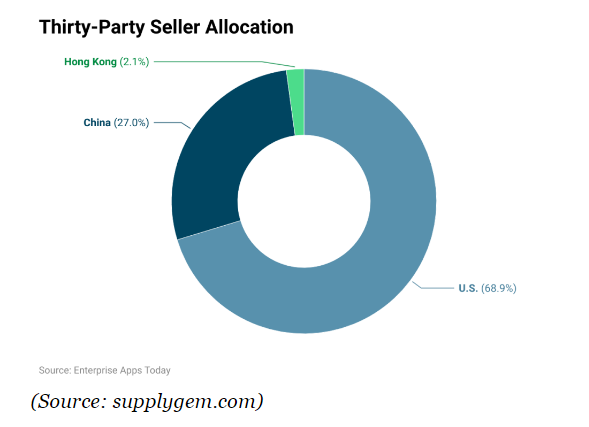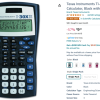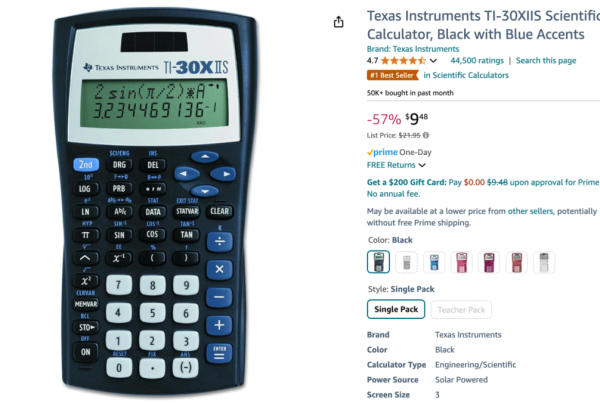Amazon Keyword Research Guide
Introduction
In this guide, we will introduce Amazon keyword research in a simple, easy-to-understand format. We will update this guide based on feedback as needed.
What Is a Keyword?
Keywords, search terms, customer phrases—no matter what you call them—are the words that customers type into Amazon when looking for related products. These keywords are terms or phrases that describe your product. Think about how you would summarize your product in just a few words; those are your main keywords.
Keywords are important because they act as a bridge between your product and what customers search for on Amazon. Everything about keywords centers on one goal: achieving organic ranking. When choosing keywords, it is crucial to keep the customer in mind. After all, they need to find your product, so the keywords must be discoverable and niche-relevant. This is where keyword research comes into play.
Why Conduct Keyword Research?
As mentioned earlier, keyword research is a vital part of Amazon SEO. Amazon considers keywords as a key factor affecting search result rankings. When done right, Amazon will understand what your product is and show it in the search results at the right time.
Knowing what your target audience is searching for allows you to optimize your product listings to offer exactly what they want. Different keywords should appear in specific parts of your listing; for instance, the primary keywords must be included in the product title. Overall, keyword research not only supports product creation but also underpins all marketing and promotional strategies—including email marketing, paid advertising, and competitive research.
Examining your competitors’ target keywords can help refine your own strategy. The best approach is to use an Amazon ranking tool. Reverse-engineer how competitors rank well for products similar to yours and adopt your strategy based on your findings. You can also use AI tools, like IdeaApe, to brainstorm new keyword ideas.

1. Understanding Keyword Types
Before you begin your keyword research, it’s important to understand how to categorize them. There are three main types of keywords:
- Title Keywords: Typically 1-2 words with the highest search volume.
- Body Keywords: More specific phrases (2-3 words) with lower search volume.
- Long-Tail Keywords: Typically 3-4 words that describe your product in detail; they have the lowest search volume among all keywords.
The primary difference among these types is how specific they are to your product. The longer and more specific the keyword, the fewer search results you’ll get. For example, consider the sub-market of basketball shoes:
- Searching for “basketball shoes” might yield over 30,000 results.
- Searching for “red basketball shoes” could narrow it down to about 5,000 results.
- Searching for “red Nike basketball shoes” might bring the results down to around 1,000.
Adding just a few extra words to the search term can significantly affect the competitiveness of the product. From the visitor’s perspective, the more context you provide, the better the results. The more specific the search terms, the easier it is to rank; conversely, more general or common keywords make ranking much harder. This illustrates why proper keyword research and creating the right search conditions are crucial.
2. A 2-Minute Guide to Choosing the Right Keywords
If you’ve been in this industry for a while, you know that once you master the process, keyword research comes naturally. However, if you’ve ever tried to explain keyword research or set up an SOP for it, you know it can be challenging. In this section, I’ll outline the exact strategies we use and, more importantly, why we build them.
There are two main reasons why keywords are essential:
- Understanding Customer Searches: You need to know what your target customers are looking for. In inbound marketing on Amazon, your customers already come to you, but what keywords do they search for?
- Tracking Keyword Rankings: Using tools like Keyworx, you can monitor your organic ranking for these keywords. Higher organic rankings equal higher profits.
To keep this guide beginner-friendly, we include two strategies that don’t require paid tools and can be executed in just two minutes.

Strategy 1: Ask Family, Friends, and Colleagues
Simply ask your family, friends, colleagues, and even strangers what they would search for to find “this product.” The key is focusing on “this product” because we are looking for their answers, not what you think the product is.
- Tip: Record all the variations and terms they mention.
- Follow-Up: Ask if there are any other variants or terms they might use.
This is a straightforward and free method to gather valuable data. It works even better if the people you ask are part of your target market. For instance, if you’re launching a fitness-related product at the gym, be sure to ask everyone around you by saying you’re doing market research for your product. Two simple questions:
- If you wanted this product, what would you search for on Amazon?
- How do you think it could be improved?
These questions will provide a wealth of useful information for your business.
Strategy 2: Utilize Amazon Search
If you have an obvious core keyword for your product (e.g., “laptop stand” or “phone charger”), start there.
- Step 1: Input the core keyword into Amazon and observe two things:
- What do your competitors include in their titles? You can quickly build a large keyword list from their titles.
- Use Amazon’s auto-suggest feature for additional keyword ideas. Amazon automatically shows suggestions based on what it thinks you’re searching for, which is highly effective.
How to Choose Keyword Search Terms
Once you have your core group of keywords, you should narrow it down to between 10 and 50 broader keywords, then input these into Keyworx. Keyworx will automatically track your organic rankings based on your product’s ASIN.
Advanced Keyword Strategies
Amazon’s A9 algorithm is continuously evolving, so using the right keywords is crucial to ensure customers can find your product. Here are some advanced concepts in keyword research:
Latent Semantic Indexing (LSI)

LSI refers to the way search engines connect your search terms with related products based on context.
- Example: When searching for “Dodgeball” on Amazon, the search engine uses the context from other search terms to determine whether you’re looking for sports equipment or a movie.
LSI helps deliver the most relevant results when customers search. The best keyword research strategies include incorporating LSI keywords into your product listings. To see it in action, type a random keyword in Amazon’s search bar and observe the auto-complete suggestions; as more words are added, the suggestions change.
Understanding Keyword Intent
It’s not enough to know whether a keyword is short-tail, mid-tail, or long-tail. It’s also crucial to understand the intent behind the search:
- Informational: Many queries on Amazon are for general information and may not lead to immediate sales, but they give you ideas on how to attract potential customers.
- Research: These queries lie between gathering product information and making a purchase. They are used by potential buyers to compare products or retailers.
- Transactional: These keywords are used by customers who are ready to make a purchase. Although transactional intent is considered the “holy grail” for keywords, on Amazon it is slightly less critical than on Google because Amazon’s customers are already in a buying mindset.
Avoiding Overly Broad Keywords
Consider the example of a clothing store. The keyword “clothes” broadly describes what the store sells, but ranking high for such a general term is nearly impossible if the store isn’t already authoritative. Instead, it’s better to target more specific keywords like “men’s T-shirt” or “women’s jeans.” Changing the wording can greatly affect the search results. Although competition might still exist, it won’t be as fierce as with overly general keywords. The more specific the keywords, the easier it is to convert product views into sales and boost your rankings.
Keyword Selection Tips
Here are some tips on how to choose the right keywords:
- Start by answering: “What product or service are you selling?”
For instance, in the basketball shoes market, using separate keywords like “basketball” and “shoes” is ineffective because, on their own, they do not adequately describe the product. - Use broader, more precise, and relevant keywords:
In fact, “50% of search queries consist of four or more words,” which emphasizes the importance of long-tail keywords. - Follow Amazon’s SEO Structure:
Amazon has a specific way it wants sellers to input information for its search engine. This makes it somewhat easier than optimizing for Google because Amazon already has its research done. They need specific types of words and phrases because their main goal is to sell products.
Every product should aim for conversion, and Amazon’s structure is designed to achieve that with relevant keywords. - Leverage Tools for Ideas:
Tools like Google Keyword Planner can provide a wealth of keyword ideas based on Google search volumes. Input these into your tracking tool to see which keywords rank best for certain products. - Customize Keywords Based on Competition:
Since keywords compete with one another, choosing less “mainstream” keywords can open up markets that others haven’t targeted. Ideally, find keywords with high search volume and low competition. This requires time and some luck—the more research you do, the better your chances. - Analyze Competitors:
For competitive niches, quickly search and see which products rank high. Then, track the keywords that are driving their rankings. - Utilize Sponsored Ads:
Sponsored ads or pay-per-click (PPC) campaigns can also be a great tool for keyword research. With automatic campaigns, Amazon displays your product for keywords it deems relevant. After running an automatic campaign, download a keyword report to identify the best-performing keywords.
The keywords with the highest conversion rates should be considered your primary keywords, and future keyword strategies should revolve around these results.
Conclusion
Choosing the right keywords is a critical decision for any Amazon seller launching a product.
Tracking the performance of these keywords will help you determine which ones to pursue for sustained success.






